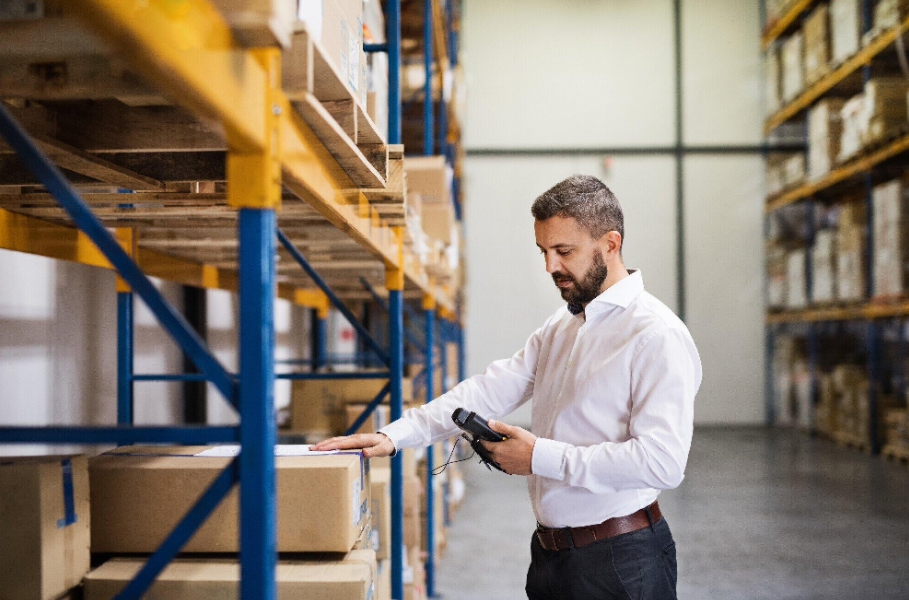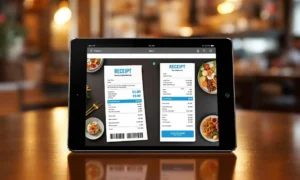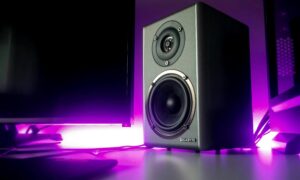Barcode technology has come a long way from simple black-and-white lines. Today, it is shaping industries in new and exciting ways.
From smart retail to advanced healthcare, barcode technology trends are creating faster, safer, and more efficient systems. These changes are not just about scanning products. They are about improving the way businesses connect with data.
As new tools grow, barcodes are moving far beyond standard uses, opening doors to innovation and better customer experiences.
The Shift Toward Modern Barcode Systems
Modern barcode systems are more advanced than old linear codes. They store more data, support faster scans, and improve accuracy. This shift is helping businesses cut errors and increase efficiency.
Companies now use these systems for tracking, security, and customer engagement. With richer data capacity, barcodes are not just identifiers but tools for deeper insights. This makes them valuable in logistics, healthcare, and retail.
Modern systems also reduce waste by improving inventory control. They ensure products move smoothly from warehouses to shelves. As industries grow, these systems continue to prove their worth.
The Rise of 2D Barcodes
2D barcodes can hold more details than traditional barcodes. They include information such as product details, expiration dates, and customer data. This helps businesses share more data without needing larger labels.
Healthcare uses 2D barcodes to track medicine and patient records. Retail uses them for faster checkout and smoother returns. These codes improve both accuracy and customer trust.
With more industries adopting 2D barcodes, their role keeps expanding. They are efficient, reliable, and widely accepted. Businesses that switch to them see better results in data handling.
QR Codes in Everyday Use
QR codes have become a part of daily life. People scan them to pay bills, view menus, and access promotions. Their ease of use makes them popular across industries.
Businesses benefit by linking QR codes to websites, apps, or payment systems. They reduce the need for physical touch, which became important during the pandemic. Customers enjoy the fast and secure access they provide.
QR codes also help brands engage with users in creative ways. They connect physical products to digital experiences. This trend shows no signs of slowing down.
Integration of IoT and Barcodes
The integration of IoT with barcodes is transforming industries. Sensors and connected devices now use barcodes to share real-time data. This allows companies to monitor supply chains more effectively.
For example, food companies track shipments to ensure products stay fresh. Healthcare providers use IoT-enabled barcodes to monitor patient treatments. This increases safety and reduces risks.
When IoT and barcodes work together, businesses gain powerful insights. They save costs by avoiding delays and mistakes. This is a key step in the future of smart data systems.
Smart Barcode Technology Expands Possibilities
Smart barcode technology takes scanning to the next level. It connects barcodes with cloud systems and mobile apps. This helps businesses track more details and improve accuracy.
Retailers use smart barcodes to give customers product details instantly. Logistics companies use them to track shipments across long distances. This creates smoother processes and fewer mistakes.
Smart technology also helps reduce fraud and improve security. Barcodes become part of advanced verification systems. This makes them useful in banking, healthcare, and online transactions.
The Growth of RFID (Radio Frequency Identification)
RFID (Radio Frequency Identification) is another key trend. It uses radio signals instead of direct scans. This makes tracking faster and more flexible.
Retailers use RFID to monitor stock in real time. Hospitals use it to track equipment and patient care. It saves time and reduces manual work.
RFID also improves data security and reduces loss. It helps industries manage products across long distances. This trend is expected to grow as more industries adopt it.
Barcode Scanning API Solutions
Businesses today want fast and easy barcode scanning. A barcode scanning API helps them add scanning features to apps and systems. This allows companies to use barcodes in custom ways.
Developers can build tools that read many barcode formats. These tools support industries like logistics, retail, and healthcare. They improve user experience by speeding up processes.
APIs also reduce costs by cutting the need for extra hardware. They let businesses upgrade current systems with ease. This trend makes barcode use more flexible and powerful.
The Role of Barcodes in Healthcare
Healthcare depends on barcodes for safety and efficiency. They track patient records, medications, and medical devices. This reduces human errors and improves patient care.
Hospitals use barcodes to match patients with the correct treatments. Pharmacies use them to manage prescriptions and prevent mistakes. These uses make healthcare safer and more reliable.
With smart systems, barcodes in healthcare are growing stronger. They improve accuracy in every step of the care process. This shows how vital they are for the health industries.
Barcodes in Education
Schools and universities use barcodes for smoother management. They track books, equipment, and student records. This saves time for staff and teachers.
Libraries use them to speed up borrowing and returns. This makes systems simple and clear. Students benefit from faster services.
With faster systems, students spend less time waiting. Barcodes make learning environments more efficient. This supports better education.
Barcodes in Supply Chain Management
Barcodes are essential in supply chains. They make tracking and shipping faster and more reliable. Businesses can monitor goods from warehouses to customer doors.
Supply chain managers use them to reduce delays and errors. Real-time data helps with better decision-making. This keeps the flow of goods smooth.
Barcodes also help prevent loss and theft. They give clear records of product movement. This makes supply chains more transparent and efficient.
Barcodes in Public Transportation
Public transport uses barcodes for tickets and passes. Passengers scan them at gates or on buses. This speeds up daily travel.
Transport companies use scans to track passenger flow. This helps them improve schedules and reduce delays. It makes travel more efficient.
Barcodes improve convenience for both companies and passengers. They create smoother, faster, and greener travel systems. This trend will keep growing.
Barcodes in Food Safety and Traceability
Food companies rely on barcodes for safety. Each code carries details about the source and journey of products. This ensures customers know what they are buying.
Supermarkets scan barcodes to trace batches. If a problem is found, recalls are faster and easier. This reduces health risks for buyers.
Exporters also use barcodes for global trade. Countries require details about food safety. Barcodes help meet these standards.
Barcodes in the Era of E-Commerce
E-commerce relies heavily on barcodes. Every product scanned becomes part of a larger system. This ensures smooth online shopping.
Warehouses use barcodes to track thousands of items. Orders are picked, packed, and shipped with speed. Customers get their products faster and with fewer errors.
Returns are also managed with barcodes. This makes the process quick and easy for buyers. Businesses keep customers happy and loyal.
Barcodes in Event Management
Event organizers now use barcodes on tickets. This makes entry faster and safer. Scanning reduces fraud and long lines.
Concerts and sports events rely on this system. It helps control large crowds with ease. Attendees enjoy smoother experiences.
Organizers also gather data through barcode scans. This gives insights into visitor numbers and habits. It helps plan better events in the future.
Enhancing Retail with Barcodes
Retail has always used barcodes, but now their role is bigger. They speed up checkout, track stock, and improve customer experience. Modern systems connect them with digital payment methods.
Retailers use barcodes to learn what customers buy. This helps them stock smarter and increase sales. They also cut waste by improving inventory accuracy.
Customers enjoy faster lines and more information about products. This creates loyalty and trust. Retail will continue to grow with barcodes at its core.
Improving Security Through Barcodes
Barcodes are also helping with security. They prevent counterfeiting and improve product tracking. This makes them valuable in industries where trust is critical.
Pharmaceutical companies use barcodes to confirm drug authenticity. Fashion brands use them to stop fake products. These steps protect both businesses and customers.
Security barcodes can also track access in workplaces. They ensure only the right people enter restricted areas. This makes them part of modern security solutions.
Training and Adoption of New Barcode Tools
New tools need proper training. Staff must learn how to use advanced barcode systems. This ensures smooth transitions for businesses.
Training sessions cover scanning devices and software. Workers learn how to handle errors and updates. This improves efficiency at every level.
Adoption also depends on clear benefits. When staff see time saved and fewer mistakes, they support the change. This creates long-term success.
Green Practices with Barcode Systems
Barcodes also support eco-friendly practices. They help reduce waste by tracking stock more closely. Businesses save money and protect the planet.
Digital barcodes reduce the need for paper. This cuts printing costs and lowers environmental impact. QR codes are a common example of this shift.
Recycling centers also use barcodes. They track materials from collection to reuse. This makes recycling more effective.
Preparing for Growth Through Barcode Technology Trends
Barcode technology is moving into a new era. Businesses now use it for security, supply chains, and customer service. These tools help save time and reduce errors. With smart systems and IoT, the changes are even greater.
Barcode technology trends show how industries can grow with better data use. Companies that follow these trends will stay ahead. The future of barcodes is about speed, safety, and stronger connections.
Did you find this article helpful? Visit more of our blogs.





























